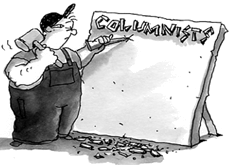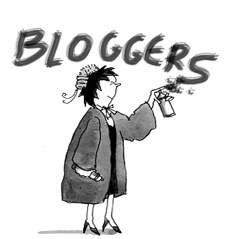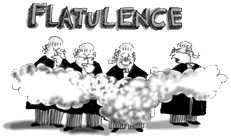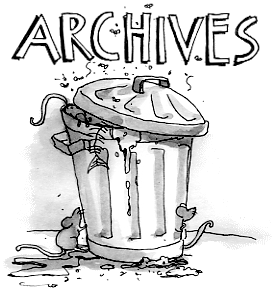Patel trial - what went wrong
 Stephen Keim & Salwa Marsh •
Stephen Keim & Salwa Marsh •  Monday, October 29, 2012
Monday, October 29, 2012 Community pressure and the justice system ... Frenzied media storm ... Prosecution shifted from a wide case to a narrower one ... Earlier evidence prejudicial ... Mud slinging exercise ... Stephen Keim and Salwa Marsh report
 Patel: High Court comes to his defence
Patel: High Court comes to his defence
WHEN describing the adverse publicity surrounding Queensland's infamous Patel case, Justice Heydon in his High Court judgment quoted the Marquess of Halifax:
"The angry Buzz of a Multitude is one of the bloodiest Noises in the World."
The result, according to Justice Heydon, was that, "there was great pressure on the prosecution to put the case against [Jayant Mukundray Patel] on its widest possible basis" in the hope of securing a conviction.
After a 58-day trial in the Queensland Supreme Court, on June 29, 2010, Patel was convicted of three counts of manslaughter and one count of grievous bodily harm.
However, on August 24, 2012, the High Court quashed the convictions and ordered a new trial, having found that a miscarriage of justice had occurred.
The High Court's decision is a reminder that, even when faced with the most unpopular of defendants and the greatest of pressure to secure a conviction, it is still incumbent upon the Crown to conduct a fair trial.
It also reinforces the importance of an independent judiciary in holding the prosecution to this standard.
The majority of the High Court described the "general tenor" of the prosecution case as alleging that Patel ...
"was generally incompetent and grossly negligent in: recommending the surgical procedures; the manner in which he carried out each of them; and the post-operative treatment which he supervised."
At two points during the trial, the defence applied unsuccessfully to have the jury discharged without giving a verdict.
The defence unsuccessfully argued that a great deal of the evidence put forward in an attempt to prove a much wider case was prejudicial and largely irrelevant.
Patel appealed unsuccessfully to the Queensland Court of Appeal, which maintained that the additional evidence remained relevant.
The High Court allowed the appeal on the ground that a substantial miscarriage of justice had occurred.
The majority (French CJ, Hayne, Kiefel and Bell JJ, with Haydon J writing a separate judgment that concurred) found that the prosecution's shift in focus late in the trial was prejudicial to Patel's defence.
The trial judge was Justice John Byrne, senior judge administrator.
The High Court majority examined this shift in focus and said:
"It appear[ed] from His Honour the trial judge's ruling that the reason for the change of direction in the prosecution case was that the expert evidence, which had then concluded, suggested that at least three of the four operations conducted by the appellant were performed with reasonable care and skill."
At this point in the trial, the prosecution sought to focus on Dr Patel's lack of surgical competence as relevant to the decision to operate.
The majority High Court judges said that much of the evidence put forward earlier in the trial in support of a wider case ...
"reflected adversely upon the appellant as a person. It suggested that he was egotistical, uncaring, and dishonest in his dealings with the patients' families, and felt guilty about his performance as a surgeon ... The prosecution case might be described as a wide-ranging attack upon the appellant both professionally and personally."
The majority stated:
"There can be no doubt that the evidence referred to above was highly prejudicial to [Patel] and that much of it was rendered irrelevant by the narrowing of the prosecution case."
The defence, during the trial, complained that the prosecution's case had been a "mud-slinging" exercise, in which everything was thrown at the defendant in the hope that something would stick.
This approach flourished in an environment of hostility towards Patel.
Dyson Heydon commented:
"It is difficult to imagine that there could be many speakers of English living in Australia, even parts of Australia outside Queensland, in the years before the trial who had not been exposed to the massively unfavourable publicity that the appellant received during these events.
It was inflammatory, derisive and bitter. Its effect must have been more intense, and therefore more damaging, in Queensland than elsewhere. The trial judge warned the jury not to be influenced by it. Counsel referred to it during the trial without contradiction.
In his address to the jury, defence counsel spoke of 'a frenzied media storm' against the appellant over a five-year period. In Queensland, the appellant was seen as a hostis humani generis."
 Heydon: prejudice affected English speakers in Queensland and beyond
Heydon: prejudice affected English speakers in Queensland and beyond
The hostility rendered Patel particularly vulnerable to an abuse of his rights as an accused.
Heydon's trenchant judgment writing has become a joy to behold, although his reference at one point to "the young Hayden Starke" was not absolutely clear. On the question of separate trials, he said:
"The young Hayden Starke would have applauded this decision to place important questions of dollars and cents ahead of mere manslaughter matters."
HH also went out of his way to be kindly towards trial judge John Byrne:
"The trial judge's endeavours throughout the trial to minimise the problems which eventually emerged were earnest, energetic, even heroic. But despite those endeavours, circumstances had conspired to ensure that the prejudice to which the prosecution's conduct of the trial had exposed the appellant was incapable of being overcome.
None of the standard techniques for dealing with material which, having been received into evidence, turns out to be inadmissible could have surmounted it."
* * *
FROM a human rights perspective the High Court's decision is interesting.
It confirms the importance of equality before the law and equal access to the protection of the law.
The Universal Declaration of Human Rights enshrines several key rights of an accused, including: equal access to the protection of the law (Art 7); the right to a fair and public hearing (Art 10); and the right to be presumed innocent until proved guilty (Art 11).
Each is vital to the fair administration of justice.
Equality before the law ensures that similar cases will be treated in the same way and that there will be no discrimination in the application of the law to particular cases and particular defendants.
The right to a fair trial guarantees that the criminal justice process is conducted in a transparent and impartial way.
The presumption of innocence is recognition of the imbalance of resources between the prosecution (conducted by the state) and the defence (on behalf of the accused).
It means that the state must satisfy a particularly high burden before punishing an individual for criminal activity.
These rights are uncontroversial in Australia. However, their application to unpopular defendants is never assured.
It is precisely in cases such as Patel's, where there is community pressure to secure a conviction, that these protections are put to the test.
Stephen Keim
President, Australian Lawyers for Human Rights
Salwa Marsh
Member, Queensland committee, Australian Lawyers for Human Rights










Reader Comments